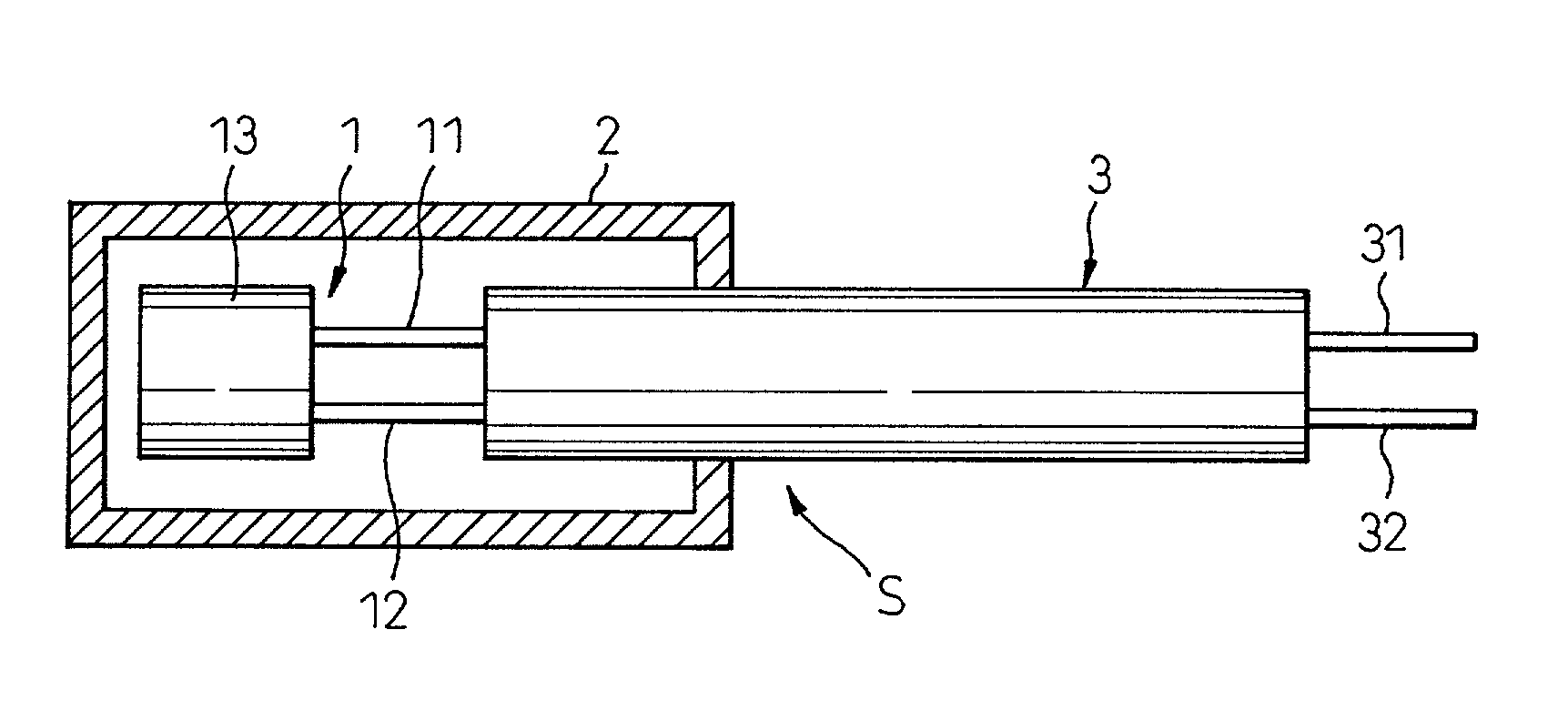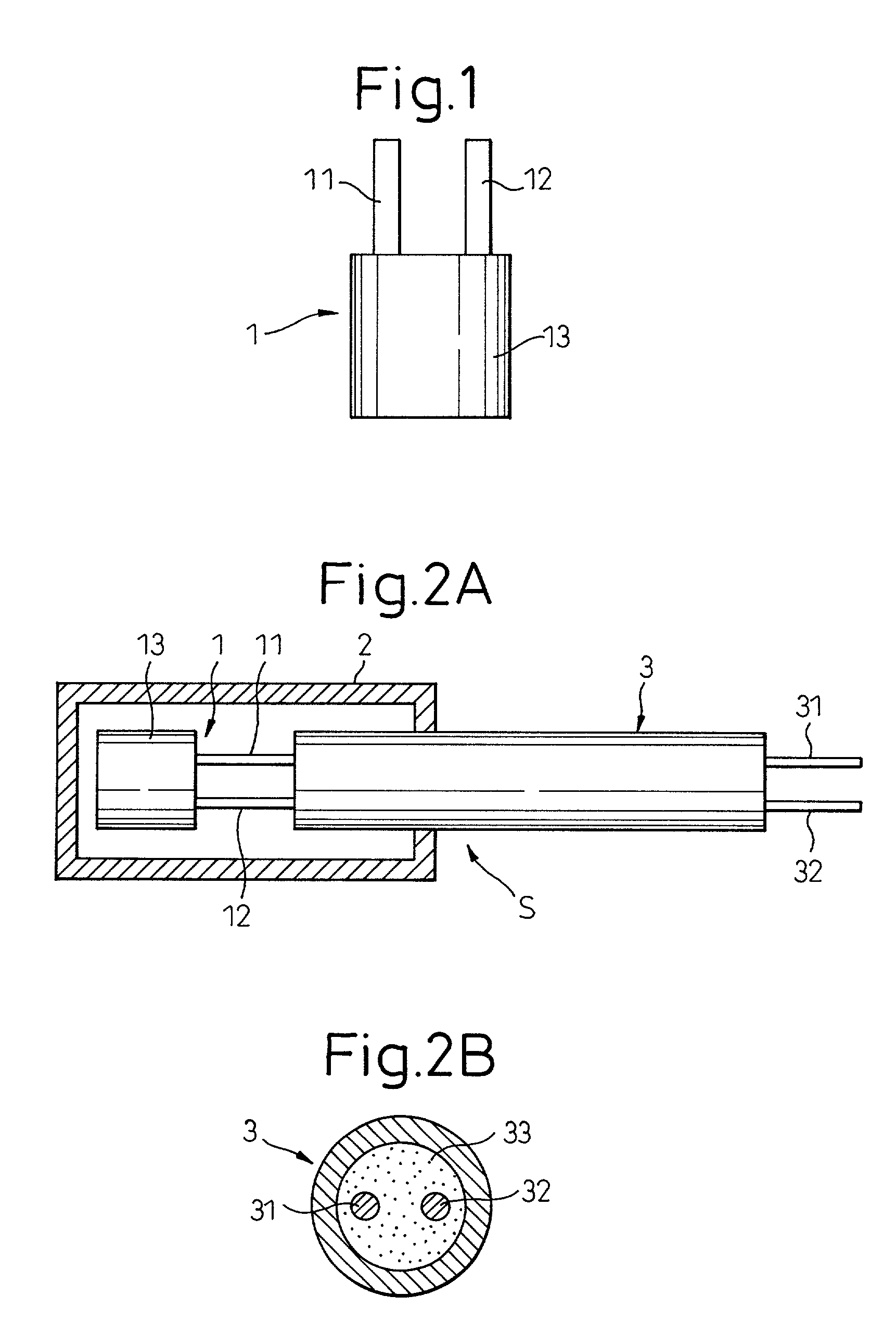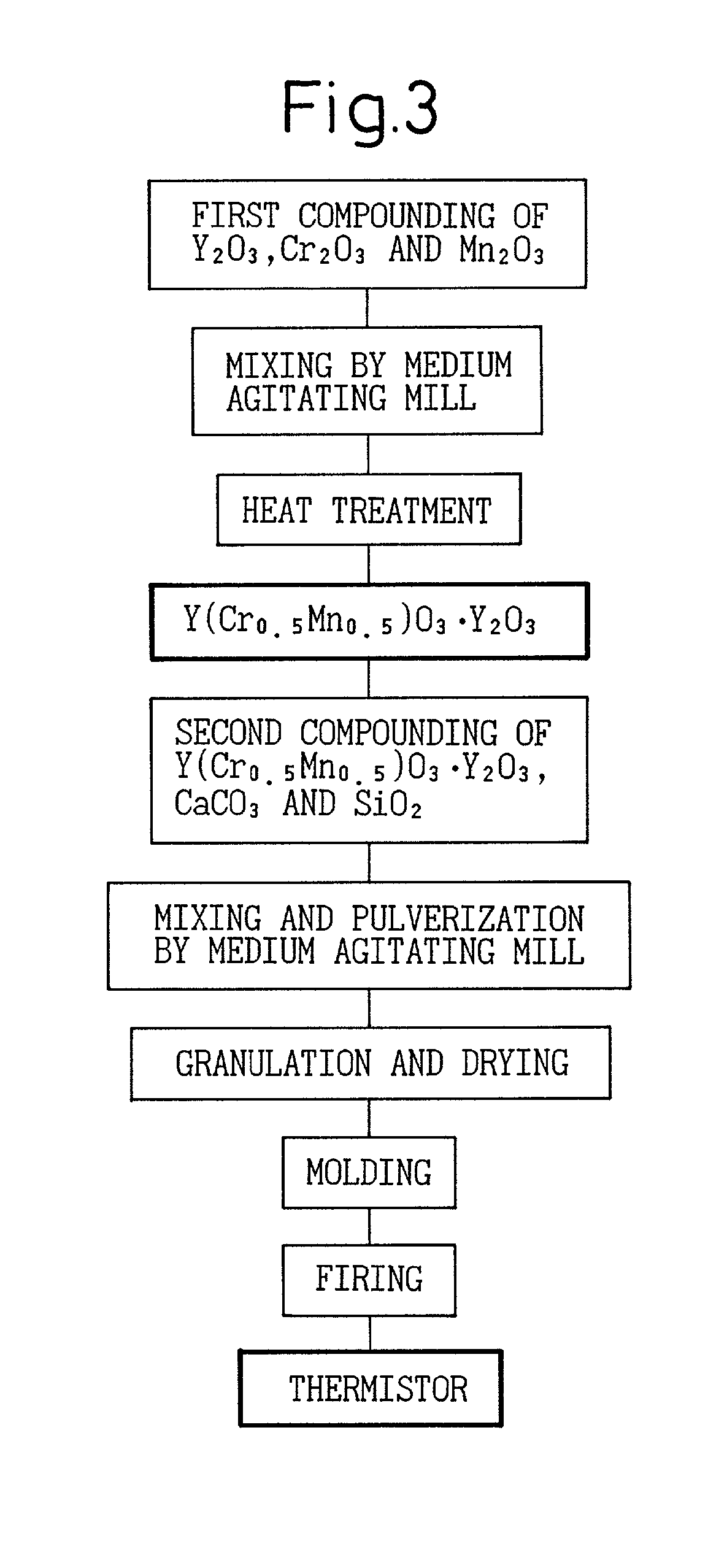Reduction resistant thermistor, method of production thereof, and temperature sensor
a thermistor and resistance technology, applied in the direction of non-metal conductors, oxide conductors, conductors, etc., can solve the problems of oxidizing the metal case, and affecting the performance of the thermistor
- Summary
- Abstract
- Description
- Claims
- Application Information
AI Technical Summary
Benefits of technology
Problems solved by technology
Method used
Image
Examples
example 2
[0097] In Example 2, a thermistor comprised of a mixed sintered body of the same composition as Example 1, that is, aY(Cr.sub.0.5Mn.sub.0.5)O.sub-.3.multidot.bY.sub.2O.sub.3 (a=0.38, b=0.62) was prepared by changing just the firing conditions in the firing step in the production process shown in FIG. 3. The same method was used to obtain, granulate, dry, and shape a thermistor material of a mean particle size of 0.2 .mu.m, then the firing conditions in the firing step were changed and the body fired in the atmosphere at 1550.degree. C. for 6 hours to obtain a thermistor comprised of a mixed sintered body having a mean sintered particle size of 10 .mu.m.
[0098] A temperature sensor incorporating this thermistor was prepared and evaluated in the same way as in Example 1. The maximum rate of change of resistance .DELTA.R, the temperature accuracy after a high temperature continuous durability test, and the initial temperature accuracy are shown in Table 1. As shown in Table 1, it could ...
example 3
[0099] In Example 3, a thermistor comprised of a mixed sintered body of the same composition as Example 1, that is, aY(Cr.sub.0.5Mn.sub.0.5)O.sub-.3.multidot.bY.sub.2O.sub.3 (a=0.38, b=0.62) was prepared by changing just the firing conditions in the firing step in the production process shown in FIG. 3. The same method was used to obtain, granulate, dry, and shape a thermistor material of a mean particle size of 0.2 .mu.m, then the firing conditions in the firing step were changed and the body fired in the atmosphere at 1600.degree. C. for 6 hours to obtain a thermistor comprised of a mixed sintered body having a mean sintered particle size of 20 .mu.m.
[0100] A temperature sensor prepared using this thermistor was evaluated in the same way as in Example 1. The maximum rate of change of resistance .DELTA.R, the temperature accuracy after a high temperature continuous durability test, and the initial temperature accuracy are shown in Table 1. As shown in Table 1, it could be confirmed...
example 4
[0101] Based on the process of production shown in FIG. 4, a thermistor comprised of a mixed sintered body of the same composition as Example 1, that is, aY(Cr.sub.0.5Mn.sub.0.5)O.sub.3.multidot.bY.sub.2O.sub.3 (a=0.38, b=0.62) was prepared. Example 4 differs from Examples 1 to 3 in the point of use of sol particles of oxides of the metal elements forming the mixed sintered body, that is, sol particles of Y.sub.2O.sub.3, sol particles of Cr.sub.2O.sub.3, and sol particles of Mn.sub.2CO.sub.3 as starting materials.
[0102] In the first compounding step, Y.sub.2O.sub.3 sol particles, Cr.sub.2O.sub.3 sol particles, and Mn.sub.2CO.sub.3 sol particles each having a purity of at least 99.9% and a mean particle size of not more than 0.1 .mu.m and a sintering aid of CaCO.sub.3 sol particles were prepared as starting materials. The Y.sub.2O.sub.3 sol particles, Cr.sub.2O.sub.3 sol particles, and Mn.sub.2CO.sub.3 sol particles were weighed to give the above target composition after heat treatme...
PUM
| Property | Measurement | Unit |
|---|---|---|
| Angle | aaaaa | aaaaa |
| Temperature | aaaaa | aaaaa |
| Temperature | aaaaa | aaaaa |
Abstract
Description
Claims
Application Information
 Login to View More
Login to View More - R&D
- Intellectual Property
- Life Sciences
- Materials
- Tech Scout
- Unparalleled Data Quality
- Higher Quality Content
- 60% Fewer Hallucinations
Browse by: Latest US Patents, China's latest patents, Technical Efficacy Thesaurus, Application Domain, Technology Topic, Popular Technical Reports.
© 2025 PatSnap. All rights reserved.Legal|Privacy policy|Modern Slavery Act Transparency Statement|Sitemap|About US| Contact US: help@patsnap.com



